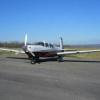Electronic Checklists
-
Members Online
- dzeleski
- N201MKTurbo
- InJuRo
- PT20J
- warbingtonmasonry
- FoxMike
- avanti
- Joseph Long
- 47U
- Ragsf15e
- Paul Thomas
- Jim F
- Kelpro999
- WalterRemington
- Neshi
- natdm
- larryb
- Lionudakis
- Greg Ellis
- bfuga1
- thomas1142
- FlyingDude
- ArtVandelay
- EricJ
- SkepticalJohn
- Fandano8691
- salty
- Utah20Gflyer
- flyboy0681
- N800DD
- Sabremech
- LANCECASPER
- Shadrach
- 33UM20C


Recommended Posts
Join the conversation
You can post now and register later. If you have an account, sign in now to post with your account.